Bedersaig WTW (2021)
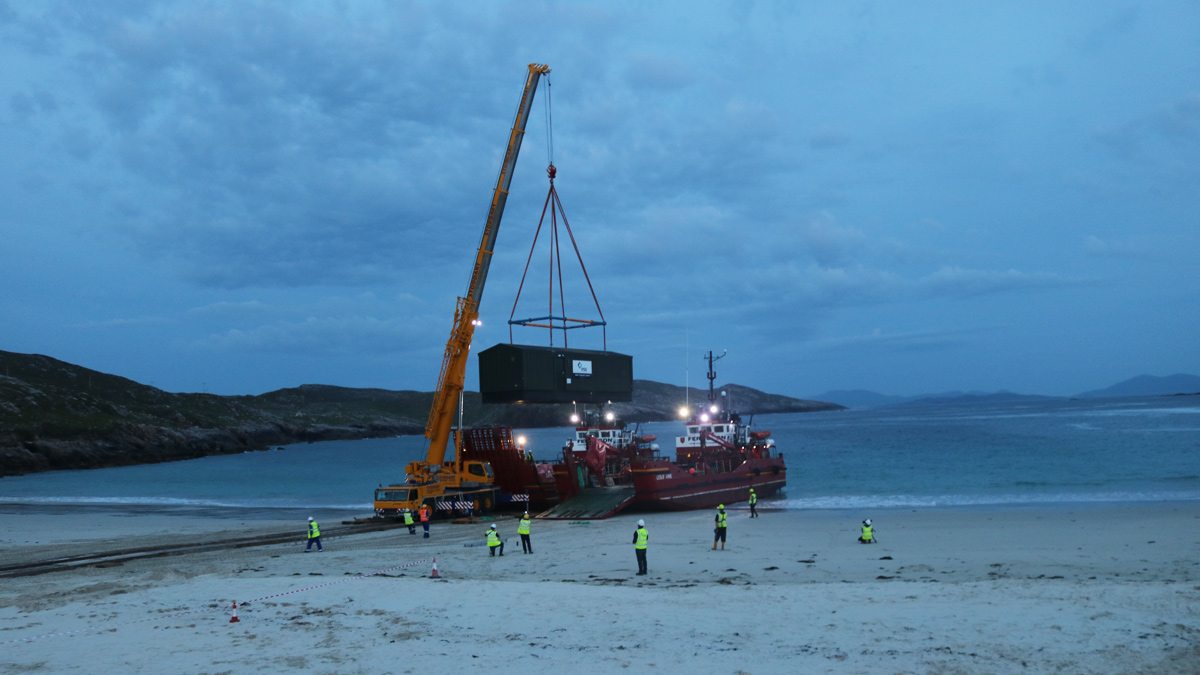
Beach landing of rural transportable treatment units - Courtesy of Scottish Water
The small villages of Huisinis and Gobhaig on the Isle of Harris each consist of a few households, but in the summer months the local beach is inundated with campers and campervans. This means that the water demand fluctuates dramatically through the year. The two villages were served by single, basic supplies: Huisinis by a borehole and Gobhaig from Loch Cnoc Mor. Although these met the criteria of safety parameters, these supplies were inadequate, with the borehole having to be topped up as often as five times per week by tanker, travelling along a very winding, 14 mile, single track road; both time consuming and costly. There was a need to replace these supplies with a more reliable system that could meet Scottish Water’s commitment to rural communities.
Optioneering
The initial solution considered was to main-out from the nearest water treatment works at Tarbert, however this would be a very costly solution as well as difficult to construct due to the single track road having to be kept open and the hard rock ground conditions. The knock on effect would be that the growth capacity at Tarbert would be reduced and in the winter water quality would be affected with retention time in the main with low demand.
Ross-shire Engineering (RSE) had developed and built three stand-alone lean specification water treatment units – Rural Transportable Treatment Units (RTTUs). These units were developed to fit into a shell that could fit onto a low loader. They were constructed in Muir of Ord and one was reserved for the North Harris project.
The solution also had to provide growth capacity for the future, including for potential connection of properties with private water supplies.
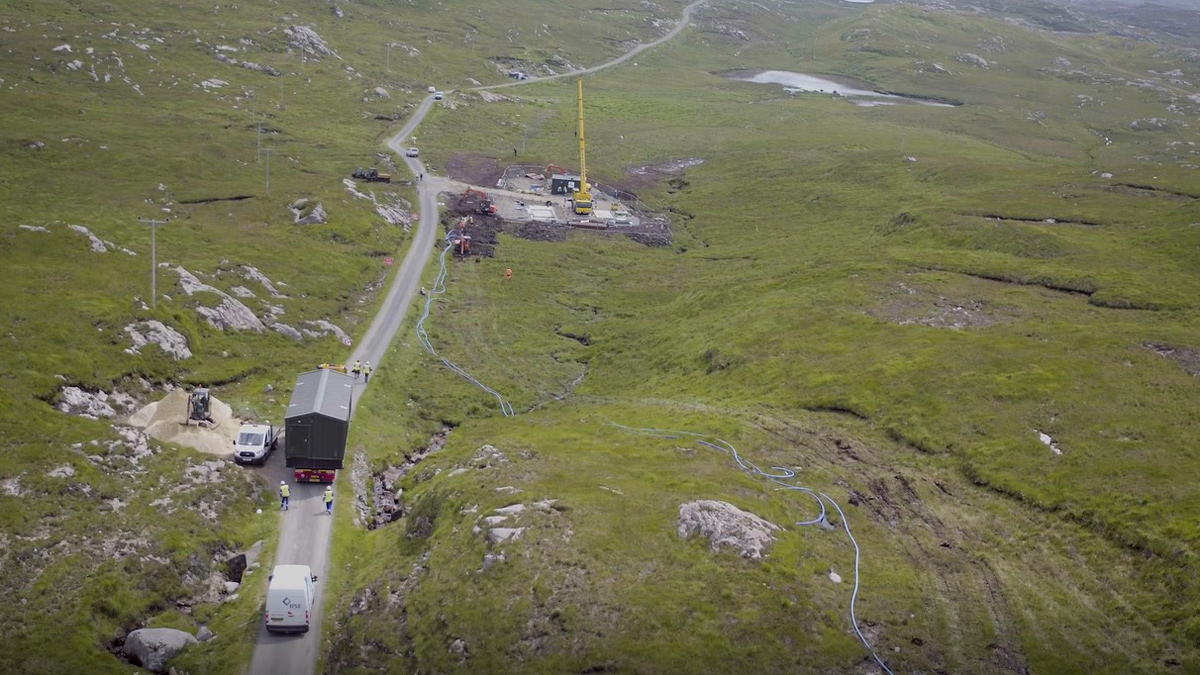
Delivery to the selected site – Courtesy of Ross-shire Engineering
Location
The location selected was close to the beginning of the village of Bedersaig as it was close to the raw water source coming from Loch Cnoc Mor and close to the road for construction. This reduced enabling works and reduced civils for access once operational, had less of an environmental impact on the flora and fauna of the area and was close to an electricity supply.
Rural Transportable Treatment Units
- Treatment technology: PCI Membranes nanofiltration stack with chloramination (sodium hypochlorite and ammonia sulphate dosing) disinfection and limestone contact tank. The original build was for chlorine treatment only and the first design challenge was to fit an ammonia sulphate dosing skid to the process, within the constrained space. Although the dosing skid could fit with a readjustment of equipment, this would have compromised H&S for operators and there would be no future monitoring equipment space if required. It was decided to install this unit into the smaller TTU unit that contained controls that would be sited beside the main RTTU and install underground ducts. This has the added benefit of provision of space for chemical make-up within the same area.
- Instrumentation: Includes DOC, pH, cryptosporidium, turbidity, chlorine and ammonia monitors, flow meters and telemetry.
- Capability: Production of 13 to 20m3/day.
- Has no duty/standby: Spares required on-site.
- Contains welfare and office/laboratory facilities.
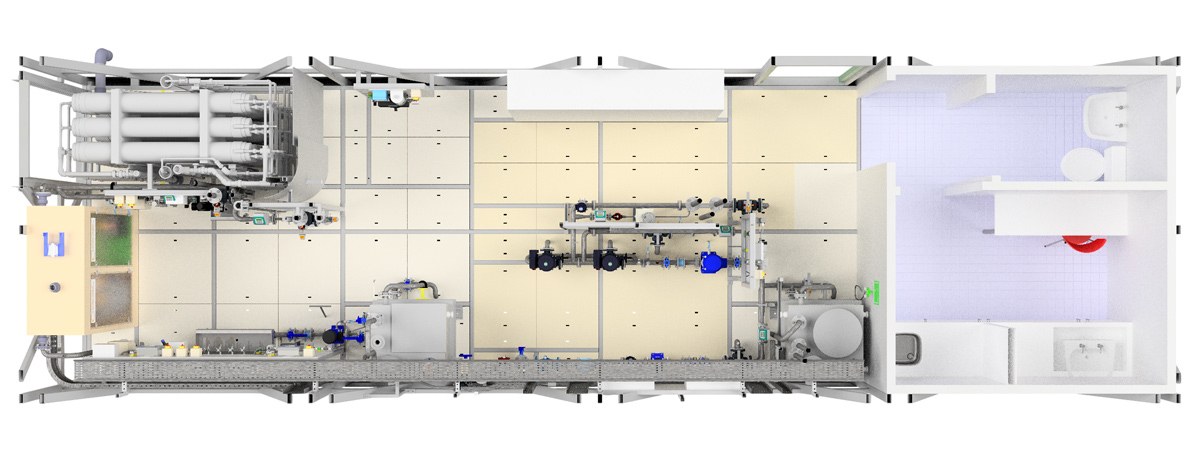
3D model – Courtesy of Ross-shire Engineering
Raw water quality
When carrying out the performance testing there was an issue of setting the treatment parameters to the raw water design envelope. The raw water was analysed for pH and conductivity and there appears to be seasonal and weather dependant fluctuations. During the colder months the pH dropped and again after storm events with an increase in the conductivity. It is thought that the proximity to the sea and the Loch replenishment by rainfall only resulted in salt water being dropped with the rain over the Loch.
Monitors linked to telemetry were installed on the raw water to allow operators to monitor the pH and correct the treatment parameters accordingly. This also has the benefit of enabling remote trending by the Water Resources team to more fully understand the fluctuations of this source.
Benefits
The modular benefits means that parts are easily replaceable if required on initial commissioning. As the water treatment plant was built and initially commissioned off-site, this reduced costs. The off-site build reduced the on-site labour requirement, which in turn reduced the requirement for accommodation (of which there is limited availability on the island), and reduced the amount of traffic along the rural roads, which reduced the overall carbon footprint of the project.
Additional project scope
- New raw water inlet.
- New raw water main (approximately 800m) laid in peat ground conditions
- New 40m3 CWT split into two cells giving a minimum of 48-hours storage in peak demand or when growth added.
- New pumping main from RTTU to CWT and re-lift pumps.
- New 63mm distribution main to Huisinis (approximately 2.5km) laid in peat and hard rock conditions.
- New 90mm and 63mm distribution main to Gobhaig (approximately 1.5km).
- Land purchase.
- New power supply and back-up generator.
- Telemetry installation.
Scottish Water – Investing in the Western Isles
Resources and management
As the off-site installation vastly reduced the number and time personnel spent on site, only one site manager was permanently present with the additional M&E and process personnel going to site when required and with multiple to-do lists. However, the site manager carried out tasks as instructed by M&E and process, feeding back results or with trends being monitored remotely.
RSE and Scottish Water Project Management was managed remotely with minimal site visits, using daily diary sheets prepared by the site manager and the local SW Operations personnel. Weekly team meetings with the full integrated functions enabled discussions and quick decisions. Using Skype the team worked from their own remote locations, reducing costs and carbon. A great practice for when COVID-19 lockdown and restrictions to the Islands were introduced!
Delivery challenge
Transporting the RTTU from Muir of Ord to site was the biggest challenge as the only road to Huisinis is 14 miles of single track from the main Stornoway to Tarbert road, with an ancient archway that crosses the road at Amhuinnsuidhe Castle. This archway was too low to fit the RTTU underneath. RSE developed a plan to use landing barges leaving from Kishorn on the mainland, traveling around the Sound of Harris to beach at Huisinis (approximately 1.5km from site) and use bog mats to create a roadway on the beach for a crane (travelling on the second barge) to remove the RTTU from the barge and then move it up the beach and onto the low loader trailer for transport to site.
The weather on the edge of the Atlantic can change very quickly and although the barge company monitored the weather forecasts from a month before the delivery date, the best laid plans sometimes have to change very quickly. As the delivery date of the morning of 15 July approached, the delivery window became smaller. A low tide was required, but stormy weather was coming in. The captain made the decision that the RTTU had to be off-loaded on arrival in the bay the night before. RSE and the sub-contractors worked through to the early hours to lift the RTTU from the barge to the low-loader, allowing the barge to depart before the weather changed. This was the correct decision as stormy conditions would not have allowed the barge to land. The low-loader made its way to site the next day as planned.
A few months later a massive storm reclaimed a lot of the beach back into the sea and the beach landing would have either not been an option or would have been more complex.
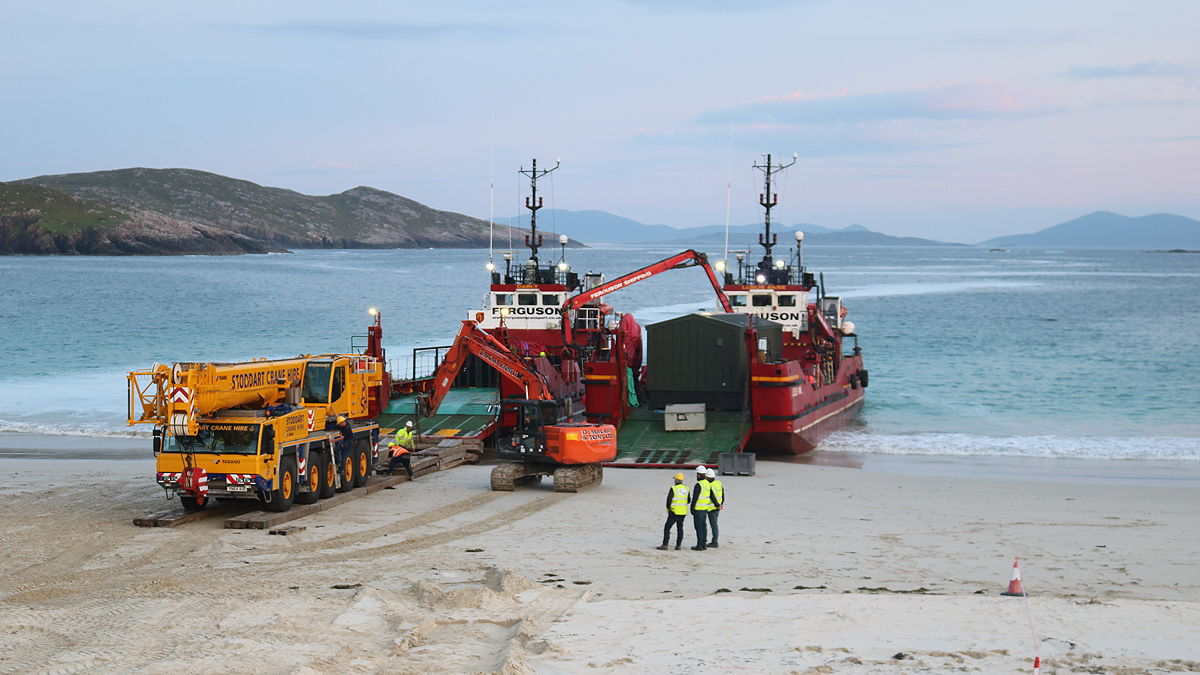
Arrival of the RTTU after 24-hours at sea – Courtesy of Ross-shire Engineering
COVID-19
When the first lockdown was instigated, Scottish Water stopped all construction, apart from to make safe and stable before leaving site. Unfortunately, this was during the commissioning period and the expected installation of a transformer and electrical connection by Scottish and Southern Electricity Networks (SSEN) was due on the day of lockdown. The site manager had local accommodation and was no risk to the village (or them to him) as he had become part of the community during the construction. He volunteered to remain there and keep the plant running to avoid replacing membranes and possibly other equipment, with the need to repeat commissioning from the beginning. When critical construction was allowed, work on the project continued under strict COVID-19 distancing rules. SSEN had to cancel their work due to bad weather stopping the team from getting to the island and then they had cessation of work. As soon as they were allowed to attend critical projects, they prioritised this one and delivered the power. Up until that point the construction was carried out with a generator.
The final inspection and H&S walkover that would normally be carried out with everyone attending site was carried out virtually using photographic evidence and local operations personnel as the only Scottish Water representatives on-site, but as they would be the people running the works, they were the best people to be there. There was not a strong enough signal to establish a link to allow a live feed using technology. The feedback was discussed at the weekly meetings and a snagging list created, until everyone was satisfied all elements were looked at and agreed on as a pass and the list emptied.
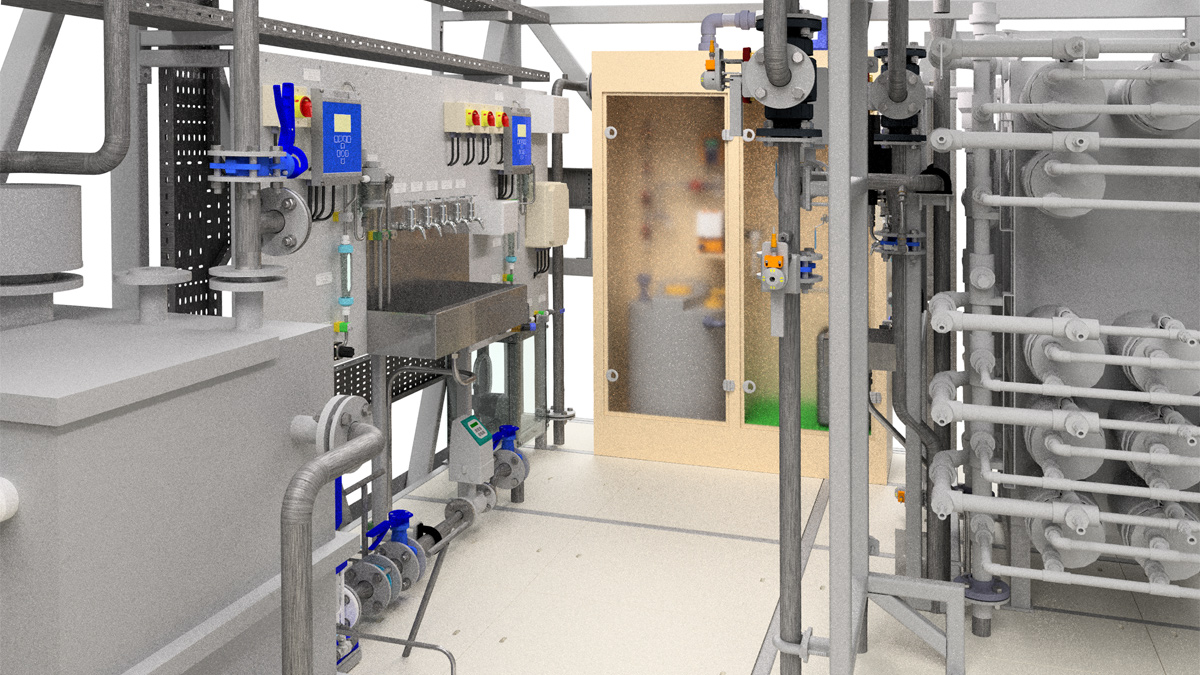
3D model showing how the equipment fits compactly into the defined footprint – Courtesy of Ross-shire Engineering
North Harris WTW: Supply chain – key participants
- Project management: Scottish Water
- Contractor (design and build): Ross-shire Engineering
- Nanofiltration membrane units: PCI Membranes
- Civils sub-contractor: Duncan Mackay & Son
- Transport Ferguson: Transport & Shipping
Community
This project was highly reputational and had been discussed in the press when the earlier proposed main-out solution was discontinued.
The land required was owned by the North Harris Trust (NHT), who also represented the community. The grazing committees of Huisinis and Gobhaig were consulted with and were Noticed on the pipeline route. The NHT were kept up to date on a regular basis with the PM building a relationship with their representatives. Gradually trust was rebuilt as Scottish Water worked with the community on the development and construction. When complete the community was delighted with their new supply, with two private supply properties applying to connect before the work was complete so as to connect as soon as it went live.
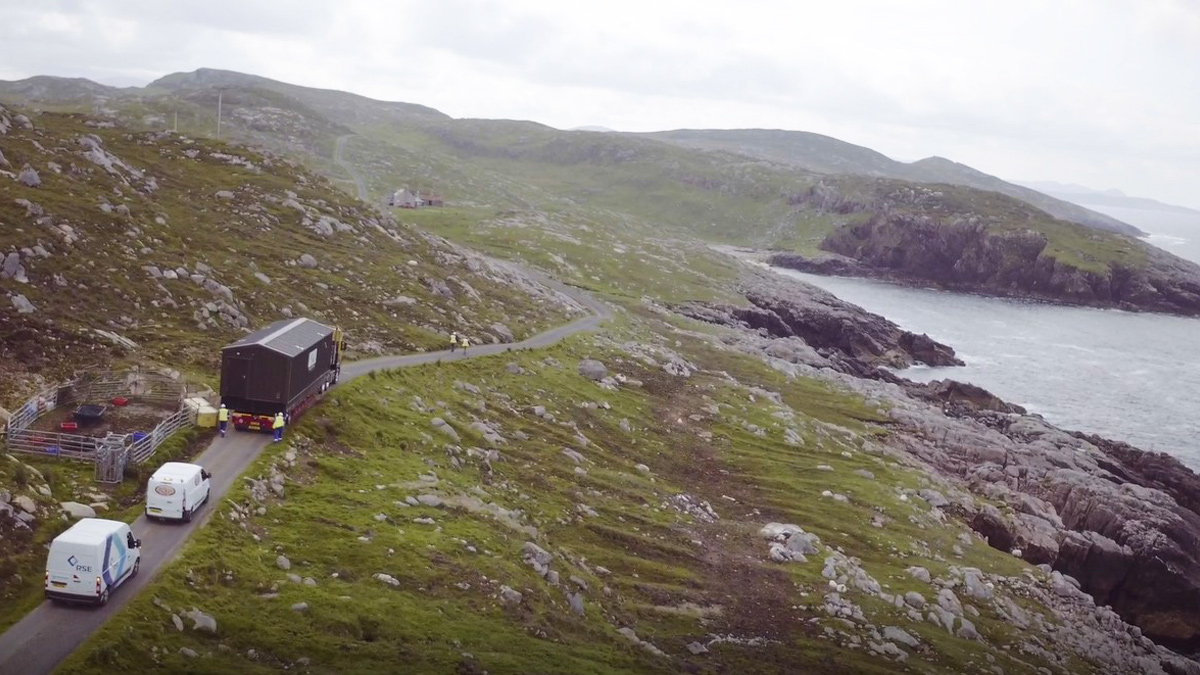
RTTU heading home and the pipeline route almost reinstated naturally – Courtesy of Ross-shire Engineering
The community can now look forward to approving new properties and business opportunities as the water supply is no longer a constraint.
As growth capacity has been included in the scope by adding additional membranes into the stack, there is capacity for further properties to the east to connect if a length of water main is installed in the future. The start of this leg was laid with 90mm pipe to enable capacity in the main in this direction.
Environment
Mindful that the environment in this area contained particular fauna and flora that were protected, a survey was carried out and the site and pipeline route determined with this reference. The civils sub-contractor used was from the Island and were experienced in digging in these peaty, rocky conditions and more importantly in reinstating the terrain. The sub-contractors work was exceptional and within a few months the heather and mosses were covering the pipeline route and now it is hard to see where the pipeline has been laid.
Visually, the RTTU and CWT does not disturb a view and have been located and built with sympathy to the landscape and the local environment.
Health & Safety
H&S is always top priority, from design to completion. There were no accidents or near misses, with H&S the top agenda item on the diary and weekly meetings. A benefit to the off-site build is that as there are less people on-site, reducing risk. The delivery of the RTTU was executed to a strict H&S plan; a tribute the people who developed and carried this out.
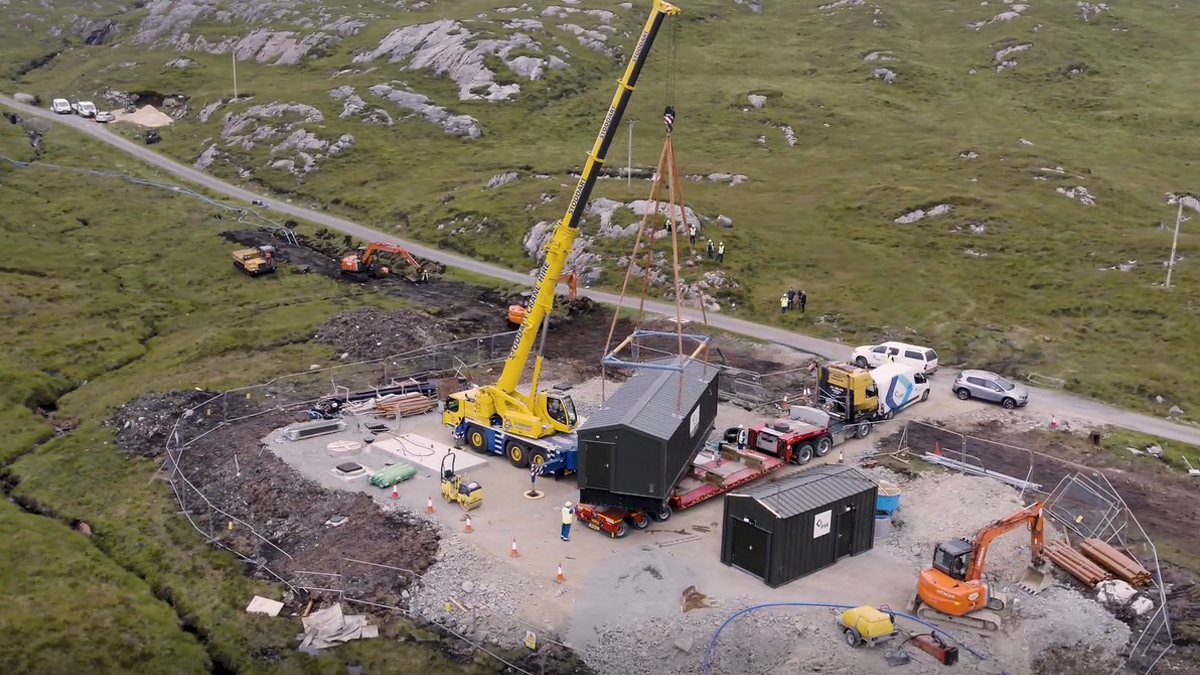
The H&S lifting plan had to be right – Courtesy of Ross-shire Engineering
Working together in partnership
The Scottish Water team, RSE and the main sub-contractor, Duncan Mackay & Son worked in a successful partnership environment with the challenges faced as one team. The relationship established not only formal routes of discussions but the trust and freedom to have exchanges of knowledge and updates between the contractor and operations as the construction progressed.
This was a contributory factor in the delivery of the project on budget of £4.92m and although COVID-19 had a time impact, the acceptance date was met too! The project had regulatory outputs that were claimed at year end.
The wider project team created a collaborative environment, with free and honest discussions. Within Scottish Water the project was supported by planning, land, environment, new roads and street works, power and communications, engineering liaison, process, operations, commissioning, and asset planning.
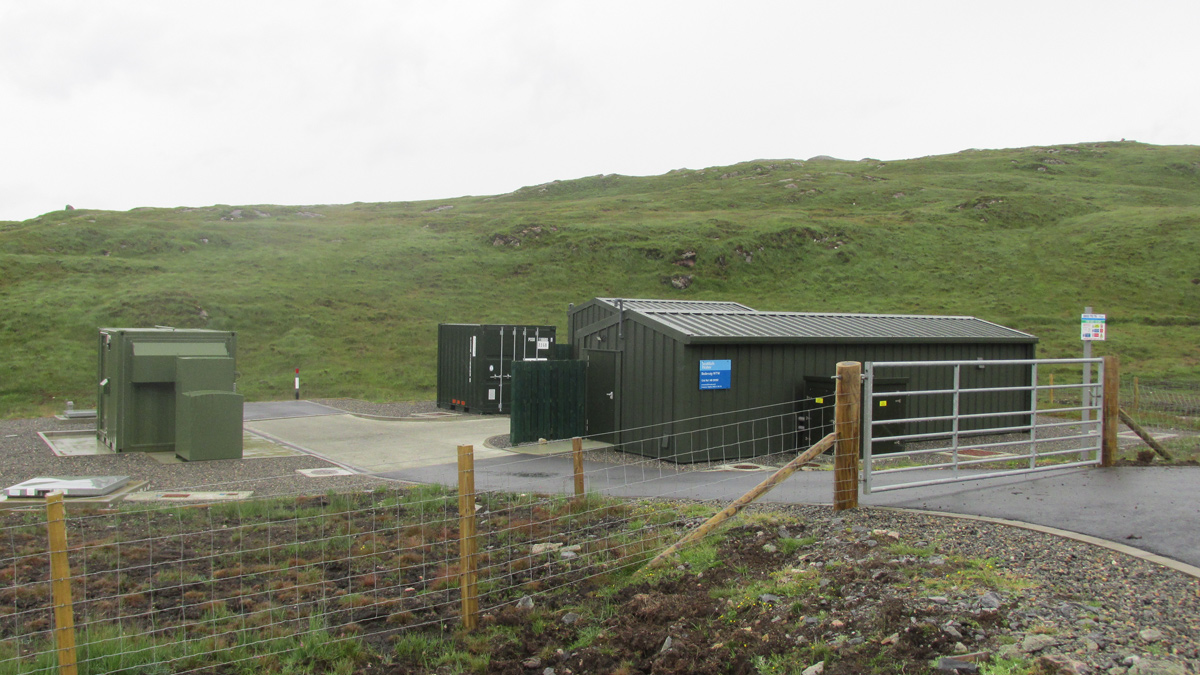
The completed Bedersaig WTW – Courtesy of Scottish Water
The people who represented these groups were involved at various design and construction stages, liaising directly with the third parties that approvals were required from. Each person brought their extensive knowledge and experience as well as their existing relationship with the third party representatives. The representatives then came together as one integrated team to look at how that fitted into programme and what the inter-dependencies were.



